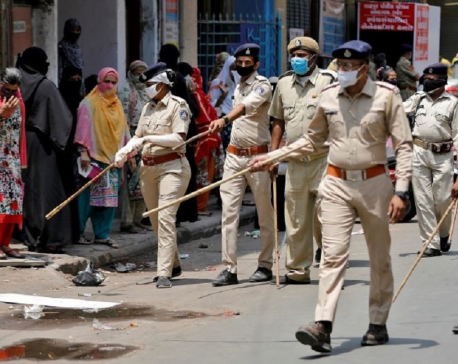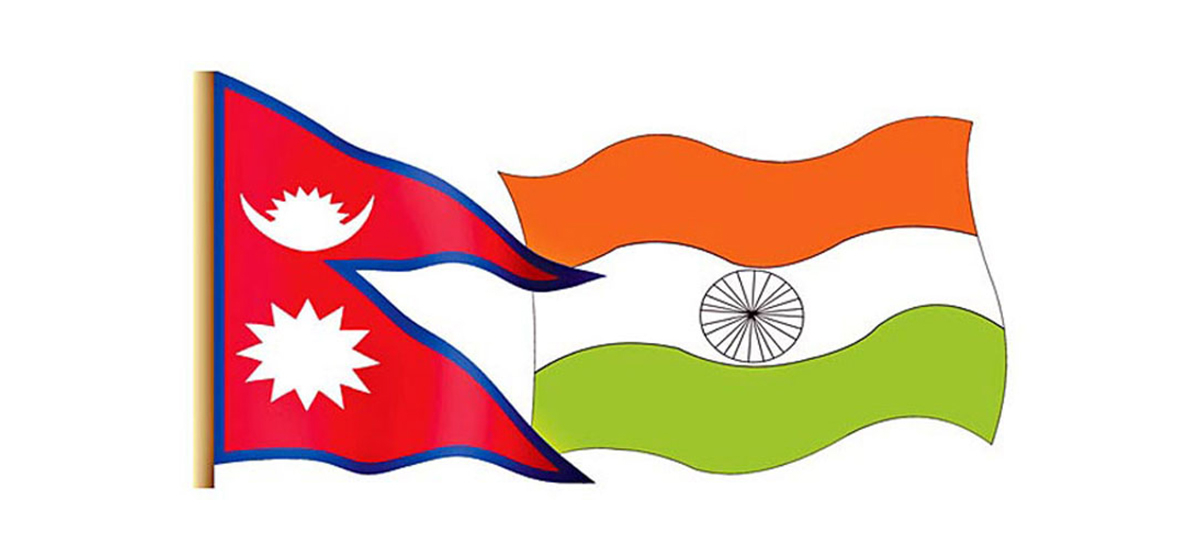
OR
Ensuring learning during the lockdown
Published On: April 24, 2020 03:30 PM NPT By: Shyam Prasad Acharya and Uttam Sharma


Shyam Prasad Acharya and Uttam Sharma
Acharya is associated with the Education Review Office under the Ministry of Education, Science, and Technology. Sharma is an independent researchernews@myrepublica.com
More from Author
Ensuring equal access to online and distance learning for all students across the country is very challenging. But this challenge should be overcome
Due to the COVID-19 pandemic, schools across Nepal have been closed since March 19 and it is not clear when they will open. They could remain closed for many more days. The major challenge at this point is to ensure that all children have access to education. Many experts have expressed their opinions on the issue. Some favor online teaching methods while others opine that Nepal is not yet ready for online teaching. It is important to be clear regarding the availability of radio, mobile phone, television, computer and internet facilities as well as the current use and possibility of digital learning materials and software while discussing the matter.
Over the past several years, high-quality digital content for school level education has been developed and distributed for free by the Ministry of Education, Science, and Technology (MoEST) and organizations such as Open Learning Exchange Nepal and Deerwalk. However, many children have not yet been able to benefit from these learning materials.
According to recent data, 88 percent of households with school-going children have mobile phones at home and 91 percent of households in urban areas and 84 percent in rural areas have mobile phones. In all the provinces, at least 79 percent of the households have access to mobile phones at home.
At the same time, across Nepal, only 26 percent of households with children in school have a radio at home. This percentage does not vary much by whether the child resides in an urban or rural area. Only 30 percent of households in rural area have radios at home. The case with the province is also similar. None of the seven provinces have more than 30 percent of the households with radio. A total of 52 percent of the households had radio according to the National Censuses of 2001. This means radio use has decreased significantly in the last decade.
Though half of the households have any kind of television at home, only 37 percent of the households with children in school have cable television at home. Furthermore, this number of masks variation across provinces, ethnicities, and rural-urban status of the household. For example, 57 percent of households in Bagmati Province have cable TV at home, while only 21 percent of households in Sudan Paschim Province have cable TV at home. Similarly, 46 percent of households in urban areas and 22 percent of those in rural areas have cable TV at home. However, very few households own computers, and most do not have an internet connection at home. For instance, only eight percent of the households across Nepal have a computer at home and a similar percentage have internet facilities at home. This percentage varies greatly by urban location, province, and ethnicities. While 12 percent of urban households have computers at home, only two percent of rural households have a computer at home.
Similarly, 23 percent of the households in Bagmati Province have computers, but three percent or less have computers in Province 2, Karnali, and Sudur Paschim. Only one percent of Dalits, two percent of Muslims, 11 percent of Brahmins and Chhetris, and 29 percent of Newars have computers at home. The proportion of households having the internet is by and large similar to those having a computer.
On the other hand, students in the community (public) and institutional (private) schools have different exposure to online learning tools. According to the National Assessment of Student Achievement (NASA) data of grade five, 37 percent of the students in private schools had at least one computer at home. The corresponding figure for those in public schools was 10 percent.
Similarly, while 22 percent of the private schools had internet facilities at home, only four percent of public school students had internet facilities. Only 35 percent of public schools have electricity. While MoEST’s data show that approximately 10 thousand community schools have computers in school, it is not clear whether those computers are being used for teaching and learning purposes. Moreover, only 12 percent of these schools have internet facilities. It is common knowledge that children studying in community schools are by and large from low-income households. While looking at households with computers, 65 percent of them are wealthy families, and just 13 percent are from low-income families. The vast majority of children without computer access are from poor households.
The data presented above shows that ensuring equal access to online and distance learning for all students across the country is very challenging. Radios cannot be the only option for distant learning as only one in every four households currently has a radio at home.
Similarly, television sets are available in only one in every two households. Focusing exclusively on delivering using television sets also risks alienating half of the children who are enrolled in schools but do not have television sets at home. Though almost 9 out of 10 households have mobile phones, one would assume that many of these sets are ill-suited for online instruction. Even if we take at face value Nepal Telecommunications Authority’s estimate that about half of Nepal’s population has access to the internet from their smartphones, it leaves a lot of Nepali children deprived of internet access.
Moreover, it doesn’t help that very few households currently have computers at home. In addition, to what extent students can use ICT tools, and whether the teachers are capable of developing content themselves is not yet clear.
Some private schools will be in a position to start online classes and children studying there will benefit from this. Even there, not all students will get equal opportunity. Similarly, the disruption in education to children in families with access to regular internet, smartphones and computers, and with family members who can support them academically will also be less than for those in families lacking these amenities or environment conducive for learning. There is no dearth of high-quality educational materials for most subjects produced in Nepal and elsewhere that students can take advantage of if they have the means and resources to access them. However, one needs to bear in mind that just access to these materials will not ensure their use.
We strongly believe that this difference in the learning environment may accentuate the disparity in learning that is already prevalent and widen inequities in education. All levels of governments should keep an open mind and explore various options so that most disadvantaged sections of the society are not further penalized. With firm determination to convert this challenge into an opportunity, it is not impossible to ensure quality online education in Nepal.
The government should be prepared with both long-term and short-term strategies to significantly increase the resources dedicated to education for procuring technologies and capacity building activities. In addition to broadcasting lectures on television, the central government should coordinate with internet service providers and ensure that households can download educational materials from particular websites for free. All three levels of government and development partners may also want to seriously consider providing smartphones or tablets with already installed high quality educational digital materials with provision to upload further contents to the children from extremely disadvantaged households. Teachers should also be in regular phone contact with these disadvantaged children and support them adequately. No one should lose sight of quality education for all.
You May Like This

Is COVID-19 killing democracy?
BRUSSELS – The economic consequences of the COVID-19 crisis occupy almost everyone’s thoughts and conversations. And for good reason: the... Read More...

The show must go on
The Covid-19 pandemic has altered our perception about what is normal, and thus our 'needs' and 'wants' carry a new... Read More...

Coronavirus spreads among Indian police enforcing world's largest lockdown
MUMBAI, May 7: Hundreds of Indian police have tested positive for the coronavirus in recent days, raising alarm among an... Read More...



Just In
- 16 candidates shortlisted for CEO position at Nepal Tourism Board
- WB to take financial management lead for proposed Upper Arun Project
- Power supply to be affected in parts of Kathmandu Valley today as NEA expedites repair works
- Godepani welcomes over 31,000 foreign tourists in a year
- Private sector leads hydropower generation over government
- Weather expected to be mainly fair in most parts of the country today
- 120 snow leopards found in Dolpa, survey result reveals
- India funds a school building construction in Darchula







_20220508065243.jpg)








Leave A Comment